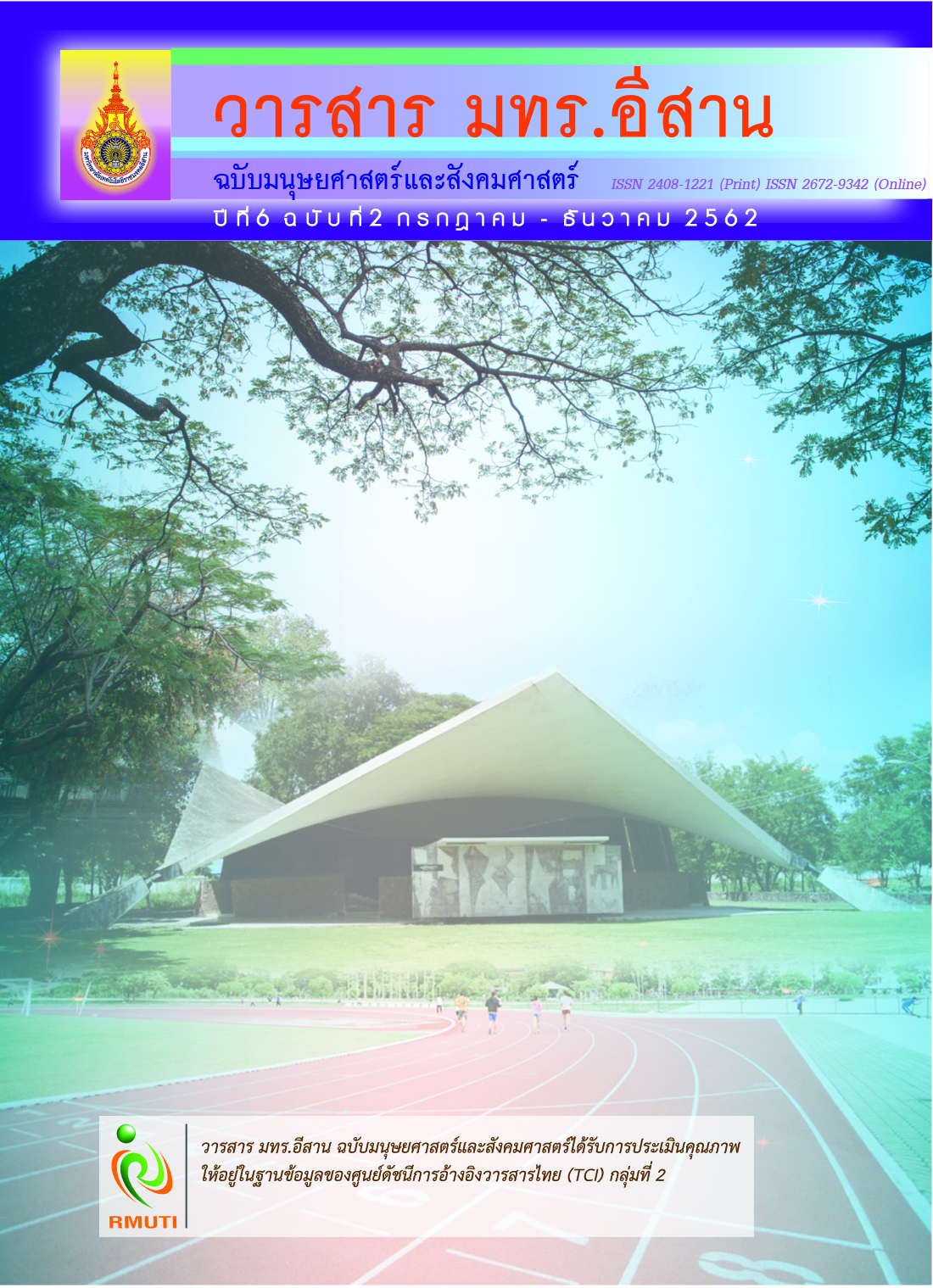The Occupation of Raising Toxin-Free Vagetables and Isan Fresh-Food Market
Main Article Content
Abstract
The 36 farmers in Ban Bak-jan Village in the 6th Hamlet, Sangkha Sub-district, Sangka District, Surin Province have engaged in toxin-free vegetable farming since year 1993. Although they mostly sell their produce at Sangka fresh-food market, some of them prefer to sell it at their roadside sheds next to their vegetable patches. The practice of toxin-free vegetable farming by these farmers not only results in positive health effects on both the farmers themselves and consumers alike, it is also economical in terms of land use. For instance, each of the farmer families needs only about 1 rai (about 1600 square meters) to grow their vegetables which bring sufficient yields for them to live a decent life. Their average income of 30,000 Thai Baht/month is 56 times higher than doing regular rice farming. Furthermore, vegetables that have been so damaged by insects that cannot be sold in the markets do not go to waste. Rather, the farmers make use of them to feed their cattle which is on average about 6 - 7 cows/family. In addition, the cows’ droppings are used as fertilizers for their vegetable patches. Consequently, the farmers are able to increase their income from selling their cows and to save some money on chemical fertilizers. It is, therefore, suffice it to conclude that the farmers’ engagement in toxin-free vegetable farming for sale is a sustainable agriculture that should be highly supported from government.
Article Details
บทความที่ได้รับการตีพิมพ์เป็นลิขสิทธิ์ของมหาวิทยาลัยเทคโนโลยีราชมงคลอีสาน
ข้อความที่ปรากฏในบทความแต่ละเรื่องในวารสารวิชาการเล่มนี้เป็นความคิดเห็นส่วนตัวของผู้เขียนแต่ละท่านไม่เกี่ยวข้องกับมหาวิทยาลัยเทคโนโลยีราชมงคลอีสานและคณาจารย์ท่านอื่นๆในมหาวิทยาลัยฯ แต่อย่างใด ความรับผิดชอบองค์ประกอบทั้งหมดของบทความแต่ละเรื่องเป็นของผู้เขียนแต่ละท่าน หากมีความผิดพลาดใดๆ ผู้เขียนแต่ละท่านจะรับผิดชอบบทความของตนเองแต่ผู้เดียว
References
สุวิทย์ ธีรศาศวัต. (2546). ประวัติศาสตร์เศรษฐกิจชุมชนหมู่บ้านอีสาน 2488 - 2544. กรุงเทพฯ : สำนักกองทุนสนับสนุนการวิจัย (สกว.) และสำนักพิมพ์สร้างสรรค์
สุวิทย์ ธีรศาศวัต. (2558). ประวัติศาสตร์เศรษฐกิจและการเงินอีสาน. ขอนแก่น : ธนาคารแห่งประเทศไทย สำนักงานภาคตะวันออกเฉียงเหนือ
สุวิทย์ ธีรศาศวัต และบัวพันธ์ พรหมพักพิง. (2562). รายงานการวิจัยฉบับสมบูรณ์ กำเนิดและพัฒนาการของตลาดสดและผู้ค้ารายย่อยในท้องถิ่นอีสาน. กรุงเทพฯ : สำนักกองทุนสนับสนุนการวิจัย (สกว.)
บีบีซี นาวิเกชัน. (2562). งบประมาณ 2563 รายกระทรวง. เข้าถึงเมื่อ (6 พฤศจิกายน 2562). เข้าถึงได้จาก (https://www.bbc.com/thai/thailand)
สำนักงานประสานงานเครือข่ายเตือนภัยสารเคมีกำจัดศัตรูพืช (2562). ผลการตรวจสารพิษตกค้างในผักผลไม้ 2562. เข้าถึงได้จาก (7 ตุลาคม 2562). เข้าถึงเมื่อ (https://www.thaipan.org/action/1107)
กล้า สุขใจ. (สัมภาษณ์). ผู้ปลูกผักปลอดสารพิษและแม่ค้าในตลาดสดสังขะ. (9 มี.ค. 2562)
เปิล ศรีแก้ว. (สัมภาษณ์). ผู้ปลูกผักปลอดสารพิษและแม่ค้าในตลาดสดสังขะ. (9 มี.ค. 2562)
มะปรางค์ ดีประเสริฐ. (สัมภาษณ์). ผู้ปลูกผักปลอดสารพิษและแม่ค้าในตลาดสดสังขะ. (9 มี.ค. 2562)
หน่อย หงส์รัตน์. (สัมภาษณ์). ผู้ปลูกผักปลอดสารพิษและแม่ค้าในตลาดสดสังขะ. (9 มี.ค. 2560)

